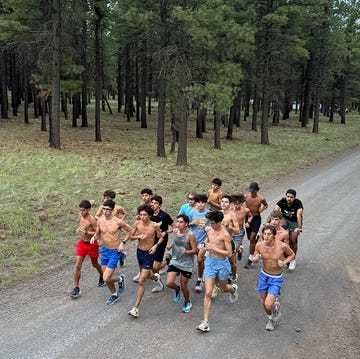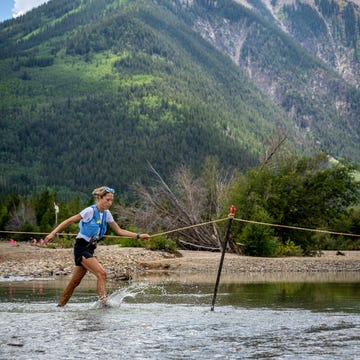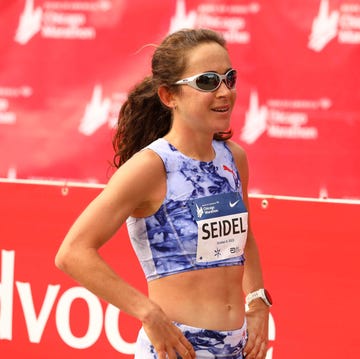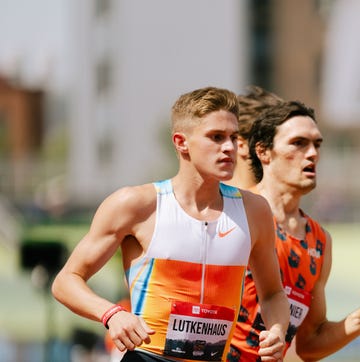On Sunday, Michael Woods stormed up the final climb of stage 9 of the Tour de France to gap some of the strongest riders in the world, winning the day’s race by 28 seconds.
It was a long time coming for the Canadian, who rides for the Israel-Premier Tech team. “I’m 36 years old, turning 37 this year, I’m not getting any younger,” Woods told AP News. “To win a Tour de France stage was my ultimate goal, and I could see the window closing.”
It’s undoubtedly the highlight of Woods’s long career, although he has taken an unconventional approach to reaching the pinnacle of the sport.
Growing up in Ottawa, Michael Woods dreamed of becoming an Olympian—but not in cycling. He was a promising middle-distance runner, winning the 2005 Pan American Junior Games in the 1500 meters and running a personal best in the mile (3:57.48) at age 18. He attended the University of Michigan, training under legendary coach Ron Warhust, but a nagging stress fracture in his foot prevented him from reaching his potential.
So he did what many runners do when they’re forced to get off their feet: he turned to cycling.
Woods was a natural. After just one year of competitive cycling, he signed a professional contract with team Garneau-Quebecor in 2013. And just two years later, Woods made it to the top level of the sport, joining the Cannondale-Drapac team on the UCI World Tour.
Since then, he’s become a two-time Olympian in road cycling, and he’s won two stages at the prestigious Vuelta a España.
In a 2019 interview with Runner’s World, Woods noted the similarities between elite-level running and cycling.
“There are skills that I learned racing the 1500 meters that I still apply today, like making really important decisions under physical suffering,” he said. “In the 1500 meters at a high-level championship meet, you really have to keep your head and be smart while also just suffering and being right on the limit. That’s certainly similar to any type of mountaintop finish, any type of climb.”
Woods now sits in 22nd place overall in the general classification of the Tour de France, although he’s over 19 minutes behind the race’s leader: Jonas Vingegaard. But he is in contention to win the polka dot jersey, which is awarded to the Tour’s best climber. He’ll need a solid performance during the second half of the three-week race to dethrone American Neilson Powless.
Woods’s talent on two wheels was perhaps best described by former teammate Phil Gaimon, when the two were tackling a tough hill at training camp in California.
“When Woods stood up on his bike, something strange happened,” Gaimon wrote in his book Draft Animals. “He was still attached to the pedals and holding his handlebars, but Mike wasn’t riding a bike at all—he was running.”
Theo Kahler is the news editor at Runner’s World. He’s a former all-conference collegiate runner at Winthrop University, and he received his master’s degree in liberal arts studies from Wake Forest University, where he was a member of one of the top distance-running teams in the NCAA. Kahler has reported on the ground at major events such as the Paris Olympics, U.S. Olympic Trials, New York City Marathon, and Boston Marathon. He’s run 14:20 in the 5K, 1:05:36 in the half marathon, and enjoys spotting tracks from the sky on airplanes. (Look for colorful ovals around football fields.)













